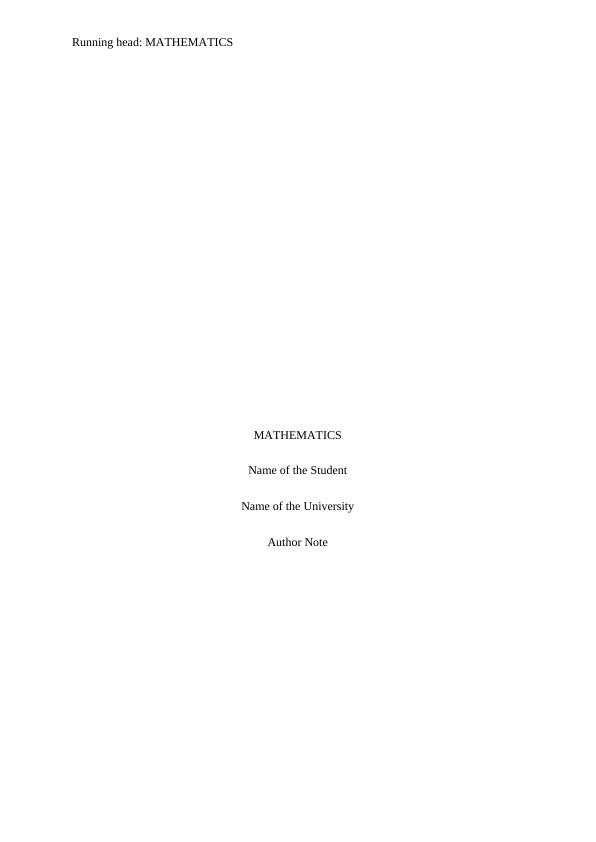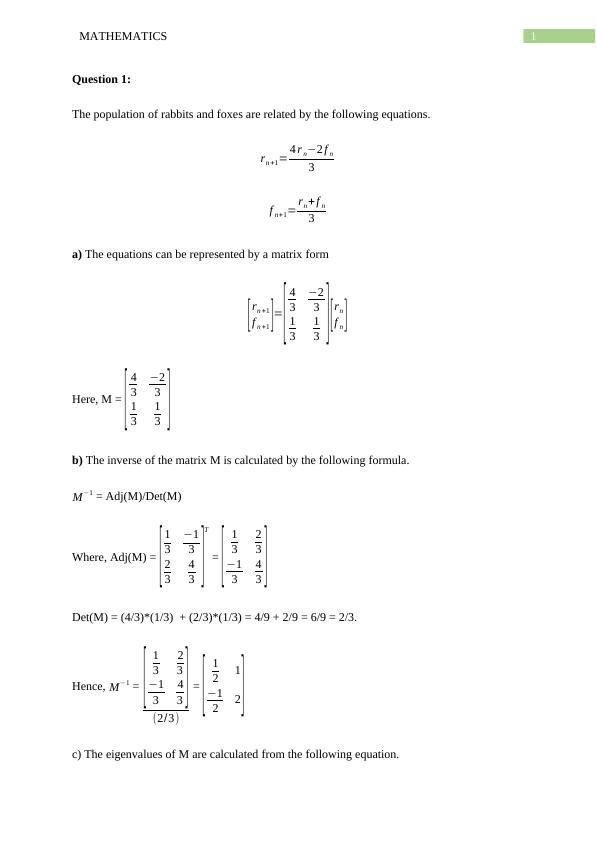Mathematics: Matrix Equations and Diagonalization
Added on 2023-02-01
13 Pages2671 Words67 Views
End of preview
Want to access all the pages? Upload your documents or become a member.
SIT292 Linear Algebra Assignment
|42
|948
|669
Linear Algebra.
|12
|488
|440
The Eigen-Values Of The Matrix
|4
|626
|18
Linear Algebra
|10
|616
|328
Mathematics Determinants-Assignment
|9
|908
|25
SIT292: Linear Algebra | Assignment
|24
|824
|77




